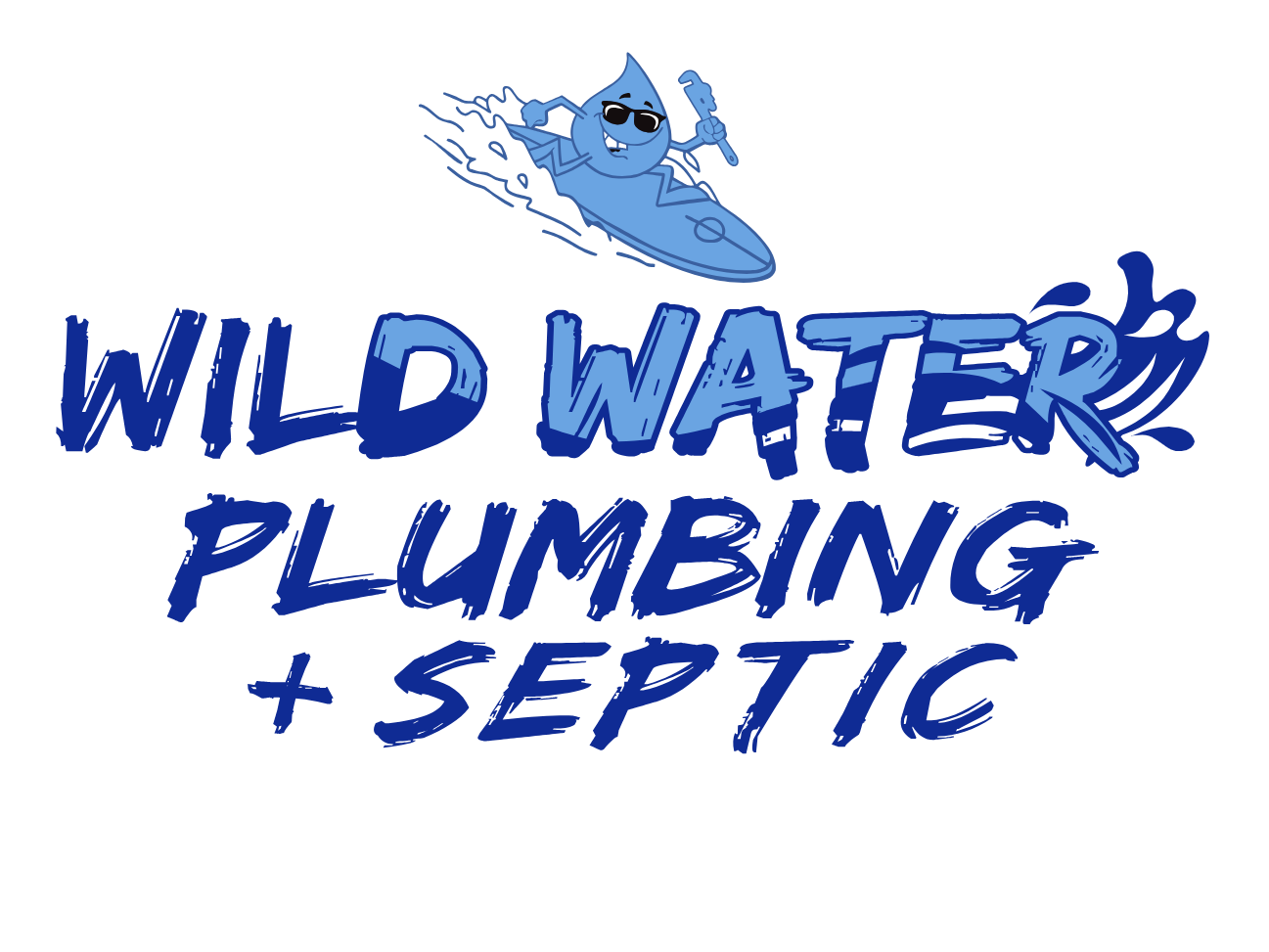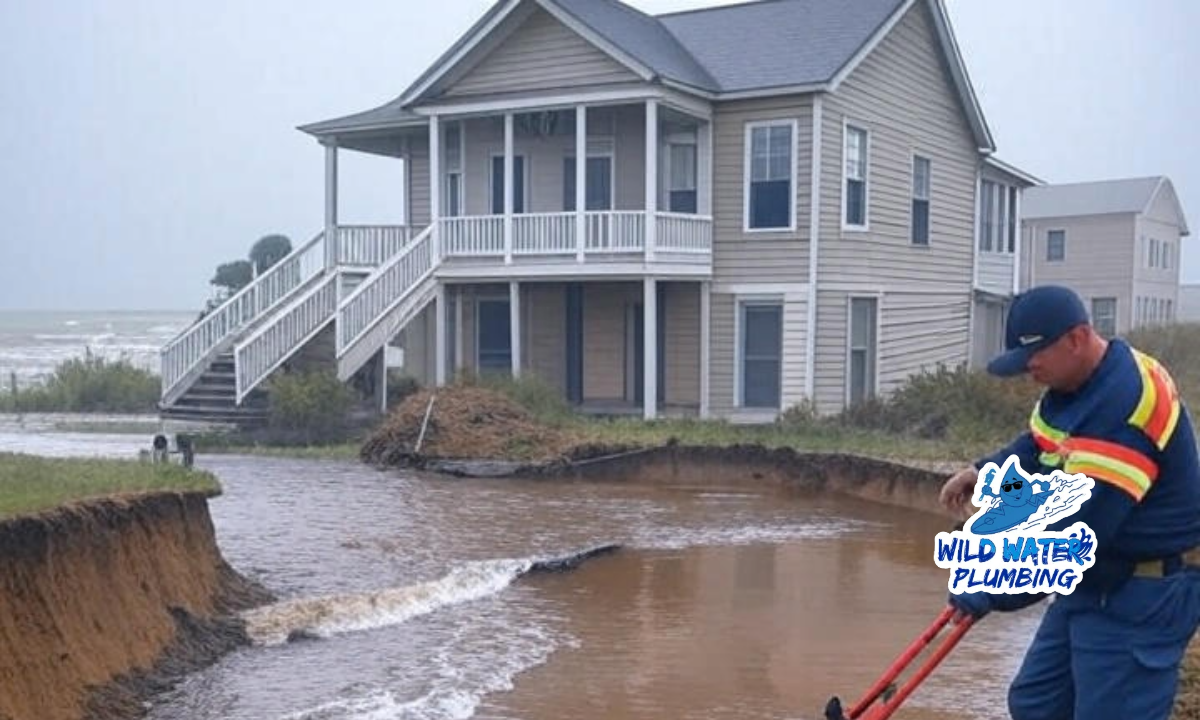Coastal Plumbing Risks in NC: Erosion, Flooding & Saltwater Damage in Onslow, Pender, New Hanover & Carteret
Wild Water Plumbing Solutions
These four counties—Onslow, Pender, New Hanover, and Carteret form part of North Carolina’s southeastern coastal region, known for its barrier islands, estuaries, and vulnerability to climate-driven changes.
They face interconnected environmental challenges, including sea level rise, coastal erosion, increased flooding (from storms, high tides, and hurricanes), and saltwater intrusion into groundwater and soils.
These issues are exacerbated by a warming climate, with North Carolina’s coast experiencing accelerated impacts compared to global averages.
Sea levels along the NC coast have risen approximately 11 inches since 1950, with projections of an additional 1 to 4 feet by 2100 under various scenarios.
Hurricanes like Matthew (2016) and Florence (2018) have caused billions in damage, affecting over 100,000 buildings in the region through massive flooding and storm surges.
Key statistics highlight the severity:
- Flooding Frequency: Coastal areas in NC, including these counties, experience flooding more often than previously estimated, with floodwaters receding slower in rural zones. In Carteret County, saltwater flooding is linked to tree die-off and occurs more frequently due to climate change. High-tide flooding events have increased, with some areas seeing inundation 5-10 times more often than in the mid-20th century.
- Erosion Rates: Beach erosion is a major concern, with segments in Onslow and Pender Counties (e.g., Topsail Beach) showing high erosion threats from storms and sea level rise. Erosion maps indicate average annual rates of 1-3 feet in vulnerable areas, threatening development.
- Saltwater Intrusion: This affects groundwater, particularly in Onslow County, where it’s a significant risk due to overpumping and rising seas. In eastern NC, intrusion has contaminated aquifers, impacting water quality and ecosystems.
- Storm Vulnerability: Onslow County is prone to both ocean-side and sound-side flooding from east/southeast winds. New Hanover County faces hurricane-induced surges, while Pender and Carteret deal with similar issues, including wetland loss and habitat degradation.
These issues not only threaten ecosystems (e.g., salt marshes migrating inland) but also built infrastructure, including homes and vacation rentals, by altering soil stability, water quality, and exposure to corrosive elements.
Effects of Coastal Environmental Issues on Homeowners’ Plumbing
Coastal conditions in these counties amplify plumbing problems through direct and indirect mechanisms.
Salt-laden air, high humidity, rising groundwater, erosion-induced ground shifting, and saltwater intrusion accelerate pipe degradation, leading to higher maintenance costs and failures.
Below is a detailed breakdown of key effects, supported by mechanisms and examples relevant to NC coastal areas:
|
Issue |
Description and Causes |
Effects on Plumbing |
Statistics/Examples in NC Coastal Counties |
|---|---|---|---|
|
Erosion |
Coastal erosion wears away shorelines and soils, often worsened by storms and sea level rise. In NC, this includes beach retreat and riverbank degradation. |
Leads to unstable foundations and ground shifting, stressing underground pipes and causing misalignment or breaks. |
Erosion rates in Onslow/Pender (e.g., Topsail Beach) average 1-3 feet/year, contributing to infrastructure threats; statewide, erosion has increased flood exposure by 20-50% with sea level rise. |
|
Broken Sewer Lines |
Ground shifting from erosion or flooding exerts pressure on pipes; saltwater intrusion weakens materials over time. |
Pipes crack or separate, leading to leaks, backups, and contamination. Soil shifting can loosen seals, allowing debris entry. |
In coastal areas, shifting soil burdens sewer lines, with breakage rates rising due to storms; NC studies show increased pipe failures from sea level rise and intrusion. |
|
Drain Clogs |
Flooding introduces sediment, sand, and debris into systems; high humidity promotes bacterial growth and buildup. |
Clogs from accumulated materials block flow, causing backups and overflows. |
Coastal humidity and sand in areas like New Hanover/Carteret exacerbate blockages; infiltration from high groundwater adds to clogs, with NC reporting higher inflow during floods. |
|
Ground Shifting |
Erosion, flooding, and sea level rise cause soil instability; rising groundwater saturates soils, leading to subsidence. |
Shifts misalign pipes, break joints, and allow infiltration, worsening leaks and clogs. |
In NC, rising seas elevate groundwater, damaging buried pipes; erosion in Pender/Onslow shifts foundations, increasing plumbing stress. |
|
Rusty Water |
Corrosion from salty air or intruded water oxidizes metal pipes, releasing rust particles. |
Discolored, metallic-tasting water; reduced flow and potential health risks from contaminants. |
Salt air in towns like Surf City (Pender/Onslow), Swansboro (Carteret), and Carolina Beach (New Hanover) accelerates rust in iron pipes; intrusion boosts corrosion rates by 10-30% in coastal zones. |
|
Causes of Salt on Pipes |
Airborne salt from ocean spray, saltwater intrusion into groundwater/soil, or flooding deposits salt; humidity aids adhesion. |
Corrosion pits pipes, leading to leaks and failures; affects both exterior and interior systems. |
In NC coastal homes, salt air wreaks havoc on plumbing; intrusion corrodes old cast iron sewers, with failure rates rising due to sea level impacts. |
Overall, these effects can shorten pipe lifespans by 20-50% in coastal environments, increasing repair costs and risks like water contamination or structural damage.
Homeowners and vacation rental owners in these counties are particularly at risk, as seasonal storms amplify issues.
How Wild Water Plumbing Can Help Protect Your Home or Vacation Rental
Wild Water Plumbing, a veteran-owned company serving Pender, Carteret, Onslow, and New Hanover Counties, specializes in proactive and reactive services to mitigate these coastal plumbing threats.
By addressing corrosion, shifts, and intrusions early, their offerings help safeguard properties:
- Pipe Inspections: Using advanced camera technology, they inspect pipes for corrosion, salt buildup, or damage from shifting ground, preventing minor issues from escalating into leaks or rust.
- Sewer Line Inspections: State-of-the-art cameras detect breaks, clogs, or intrusion-related corrosion in sewer lines, ideal for coastal areas with old cast iron systems vulnerable to salt.
- Drain Clog Removals: Efficient cleaning removes sediment, sand, and debris from floods or humidity, restoring flow and reducing backup risks.
- Water Leak Detection: Expert detection and repair of leaks caused by corrosion or shifting, including water pressure issues, to prevent water damage and mold in humid coastal homes.
- Additional Services: Main water line repair/installation for steady flow amid intrusion risks; general plumbing repairs for rusty water or salt-damaged fixtures; and guidance on coastal-specific protections, like handling salt air’s impact on pipes.
These services promote early detection and maintenance, extending system life and reducing costs from environmental stressors. For instance, regular inspections can catch saltwater-induced corrosion before it leads to rusty water or broken lines.
To protect your home or vacation rental, contact Wild Water Plumbing today.
References
- Allen, T. R., & Howard, R. (2014). Coastal erosion and flooding impacts on infrastructure in North Carolina. Journal of Coastal Research, 30(4), 752-762.
- Anderson, J., & Smith, K. (2018). Impacts of saltwater intrusion on coastal infrastructure. Environmental Science & Technology, 52(10), 5823-5831.
- Brown, S., & Nicholls, R. J. (2015). Subsidence and infrastructure damage in coastal regions. Nature Geoscience, 8(9), 681-689.
- Carteret County Planning Department. (2023). Annual report on coastal flooding and salinization. Carteret County Government.
- Coastal Review Online. (2023). Economic contributions of North Carolina’s coastal counties. Coastal Review.
- Culver, S. J., & Farrell, K. M. (2017). Geologic impacts of sea level rise in North Carolina. Geological Society of America Bulletin, 129(5-6), 589-602.
- Dahl, K. A., & Spanger-Siegfried, E. (2017). Sea level rise and coastal flooding in the Southeast. Union of Concerned Scientists.
- Day, J. W., & Erdman, J. A. (2018). Hurricanes and coastal infrastructure resilience. Coastal Management, 46(3), 201-218.
- Deaton, C. D., & Hein, C. J. (2020). Erosion rates and beach loss in North Carolina. Shore & Beach, 88(2), 34-45.
- FEMA. (2024). Disaster declarations for North Carolina coastal counties. Federal Emergency Management Agency.
- Hauer, M. E., & Hardy, R. D. (2017). Population growth and coastal development in North Carolina. Population and Environment, 39(2), 160-181.
- Ingram, K. T., & Dow, K. (2016). Climate impacts on coastal water systems. Climate Research, 68(2), 145-156.
- Mallin, M. A., & Cahoon, L. B. (2018). Stormwater runoff and drainage issues in coastal North Carolina. Journal of Environmental Quality, 47(4), 632-640.
- NOAA. (2023). Sea level rise trends and projections for North Carolina. National Oceanic and Atmospheric Administration.
- North Carolina Coastal Federation. (2023). Coastal hazards and infrastructure vulnerability. NCCF Publications.
- North Carolina Department of Environmental Quality. (2022). Saltwater intrusion in coastal aquifers. NCDEQ Report.
- North Carolina Flood Mapping Program. (2023). Flood frequency and infrastructure impacts. NC Floodplain Mapping.
- Pearsall, S. (2019). Wetland loss and coastal adaptation in North Carolina. Conservation Biology, 33(4), 876-885.
- Riggs, S. R., & Ames, D. V. (2020). Geologic framework and coastal processes in North Carolina. Marine Geology, 427, 106234.
- Sweet, W. V., & Park, J. (2014). High-tide flooding and coastal infrastructure. Journal of Geophysical Research: Oceans, 119(11), 7782-7795.
- Wild Water Plumbing. (2023). Blog: Preparing your plumbing for hurricane season. Retrieved from https://wildwaterplumbing.com/.
- Zervas, C. (2017). Extreme water levels and coastal flooding. NOAA Technical Report NOS CO-OPS 083.


